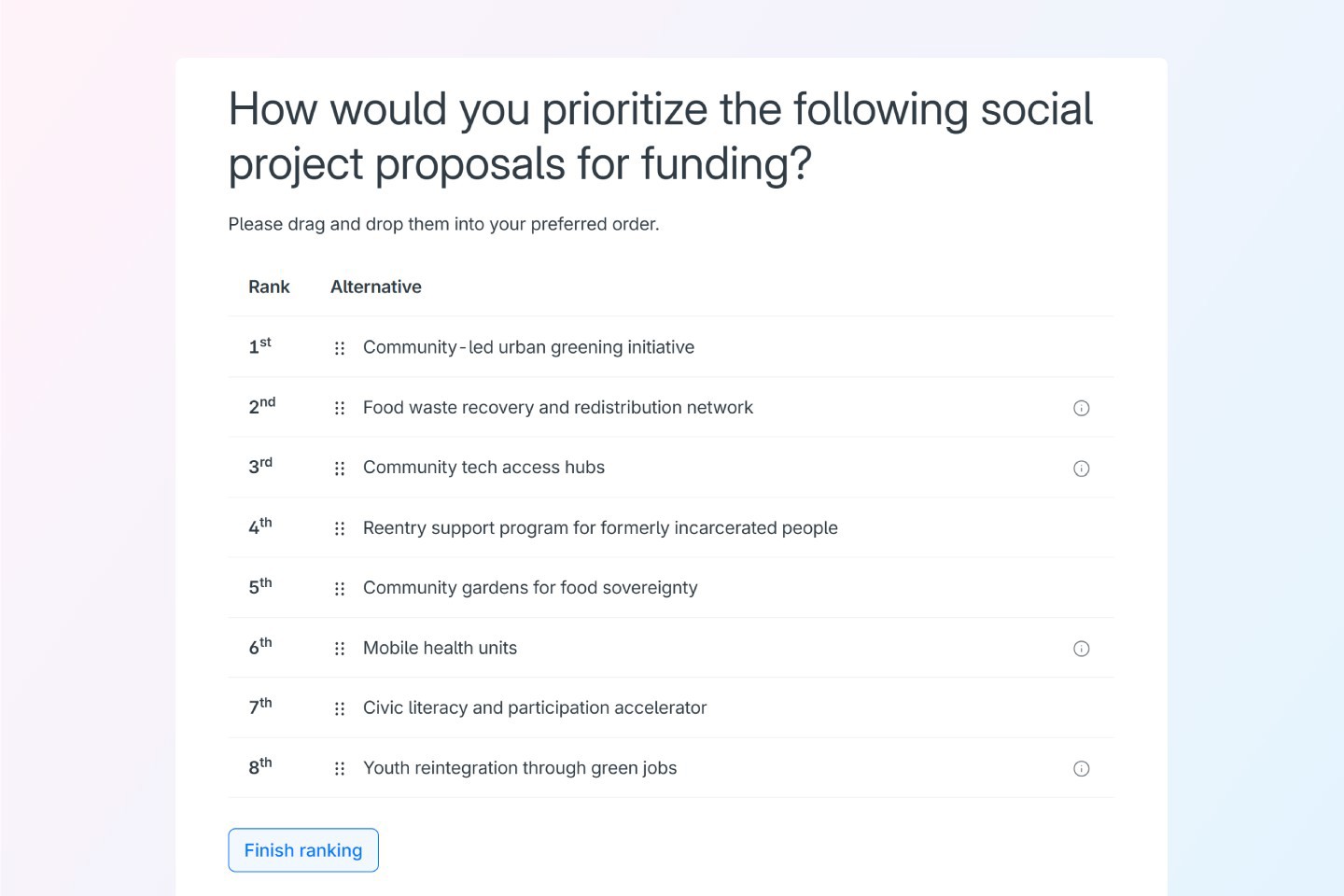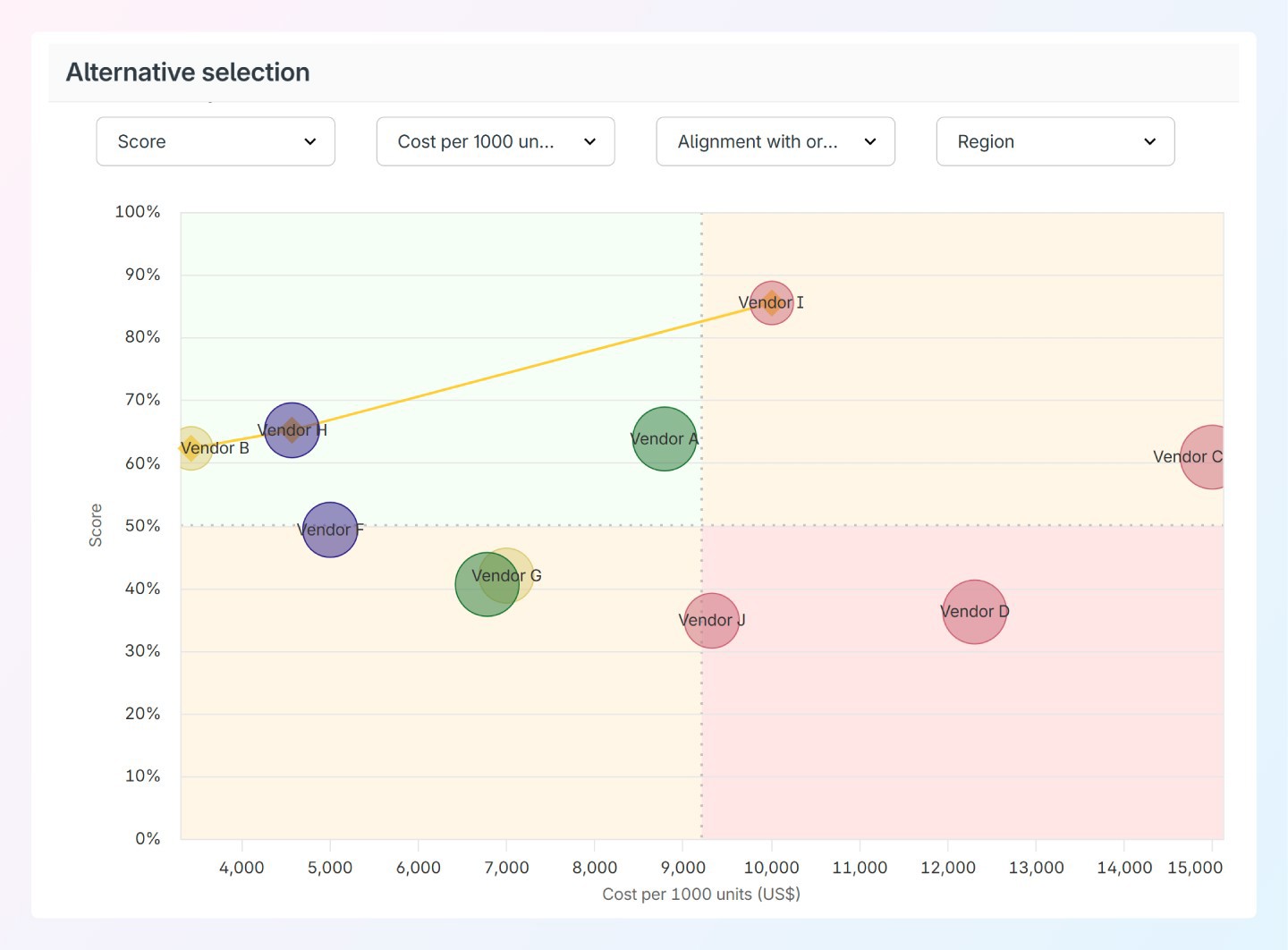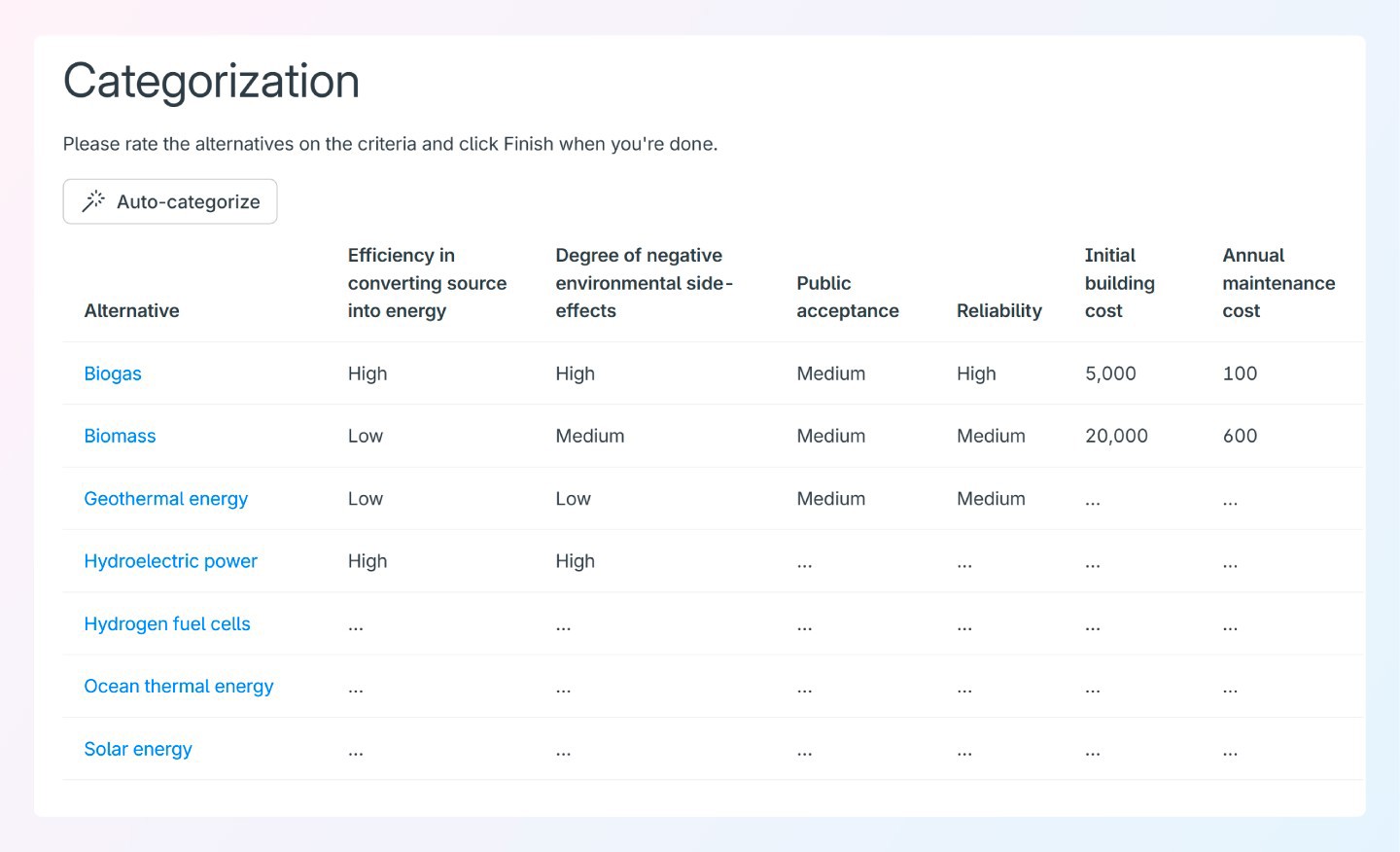Organizations are increasingly prioritizing ethics in decision-making. This may be driven by a number of factors, including stakeholder pressure, company reputation, and workplace culture, among others.
Employing an ethical decision-making model helps streamline ethical decision-making and ensure that day-to-day decisions align with organizational values. Emphasizing ethics ultimately improves employee loyalty, public trust, brand image and productivity.
However, “ethical” may mean different things to different people. And to complicate things further, decision-making often involves varied stakeholders and competing values, which may be tricky to balance.
In this article, we provide an overview of ethical decision-making, discuss some principles of ethics and how they relate to organizational decision-making, and walk you through a step-by-step process for building an ethical decision-making model to guide your organization’s decision-making.
What is ethical decision-making?
Ethical decision-making refers to making choices in a way that aligns with a set of moral principles or values. These principles may include minimizing negative impacts on others, looking beyond personal benefit to act for the greater good, or respecting each person’s individual freedom, among others.
Remember that what counts as “ethical” can vary significantly between individuals and cultures – there is no single, universally accepted ethical decision-making paradigm. Therefore, when creating an ethical decision-making model, it is important to think about who you want to include in the decision-making process and what “ethical” means to your decision-makers.
Examples of ethical decision-making frameworks
To help guide ethical decision-making, scholars of ethics have created some frameworks that can be applied to assess the ethical implications of organizational decisions. Here are some examples of such ethical decision-making frameworks.
The PLUS ethical decision-making framework
The most commonly used lens for ethical decision-making is PLUS, which stands for Policies, Legal, Universal, and Self. Throughout the decision-making process – which we will go over later – the decision-maker would apply the considerations in the acronym PLUS:
- Policies: Is this consistent with organizational policies and guidelines?
- Legal: Is this acceptable under legal regulations?
- Universal: Does this align with organization-wide values?
- Self: Is this consistent with my own ethical beliefs?
PLUS is specifically designed for internal decision-making in an organization; for example, evaluating a new company policy, or making decisions in HR/employee relations. However, it can also be applied for external decisions, such as procurement.
Markkula Center framework for ethical decision-making
The Markkula Center for Applied Ethics at Santa Clara University provides six lenses through which to assess whether or not an option is ethical. These include:
- Rights – For example, the right to live the life one chooses, the right to privacy, the right to be told the truth, etc.
- Justice – Everyone should be treated fairly or equally according to some sort of standard such as need or merit
- Utilitarianism – The most ethical approach is the one that produces the greatest good over harm for all stakeholders
- The common good – Contributing to the welfare of society as a whole, rather than merely individual benefit
- Virtues – In line with certain values or morals such as honesty, compassion, integrity, fairness, and self-control, among others.
- Care ethics – Rooted in interdependence and compassion; decisions should incorporate the needs, feelings and opinions of all stakeholders.
Compared to PLUS, the Markkula framework is intended to help decision-makers more deeply examine the ethical implications of a decision. This makes it especially well-suited for assessing conflict situations, such as competing stakeholder interests. On the other hand, PLUS works more as a quick check as to whether a decision is ethical or not.
Environment, Social and Governance standards
Environmental, Social, and Governance (ESG) standards, which are increasingly widely used, can be viewed as another framework for ethical decision-making. ESG standards evaluate a company’s practices in terms of environmental impact, social responsibility and governance integrity.
Though not originally designed as an ethical framework, ESG nonetheless helps organizations make more ethical decisions by emphasizing what is right for the people, the planet and society as a whole – rather than prioritizing corporate profit alone.
In response to growing government regulation and societal pressure, investors are increasingly applying ESG measures when allocating capital. ESG principles can guide organizations in evaluating the broader ethical implications of their actions, particularly in relation to social and environmental impact.
How does ethics apply to organizational decision-making?
Organizations face ethical questions in many forms. For example, should an organization prioritize profits and maintain current practices, even if doing so harms the environment? How much should stakeholders or employees be involved in company decision-making?
The extent to which a company adheres to ethical principles in its practices can impact outside perception, investor buy-in, and internal performance and loyalty. This can have substantial impacts on a company’s performance and ultimate success.
Organizations can better align with ethical principles by implementing particular practices and tools. For example, surveys can help include diverse stakeholder perspectives in decision-making, especially where hundreds or thousands of people are involved. Additionally, following a structured decision-making process helps keep decision-makers’ personal biases in check and, in turn, make decisions more objectively and fairly. Ethical decision-making models can facilitate this process.
Ethical decision-making model example
In general, ethical decision-making models used for organizational decision-making consist of applying ethical decision-making frameworks (such as the ones we discussed above) to the steps of the decision-making process.
Using the PLUS framework as an example, such an ethical decision-making model may look like this:
- Define the problem and identify relevant ethical implications.
- PLUS: Does this problem present any conflicts with company policies, legal regulations, organizational values, or my own ethical beliefs? If so, which ones?
- Gather relevant information and seek relevant guidance
- Identify alternative solutions to the problem
- Evaluate alternatives by applying your chosen ethical framework
- Do these alternatives resolve the ethical violations presented by the problem? Do they create any new ethical violations related to PLUS? Which trade-offs need to be made, and are they acceptable?
- Make a decision
- Which of the alternatives performs the best on the PLUS considerations?
- Implement the decision
- Monitor and review the outcome, applying your chosen ethical framework to reflect on the outcome.
- Have the PLUS conflicts presented by the problem been resolved? What did we learn from this process? Are there any follow-up actions that should be taken?
Of course, you can substitute any other ethical decision-making framework instead of PLUS in the above ethical decision-making steps.
Creating an ethical decision-making model for your organization, using 1000minds
It’s likely your organization may have other ethical principles or general criteria to consider when making a decision that are not covered by any existing frameworks – after all, each organization has its own needs and values, and each decision involves a unique set of considerations.
Furthermore, ethical decision-making means making decisions in a way that is transparent, inclusive, and fair. Evaluating multiple decision criteria in such a way, while also avoiding bias, is very tricky and typically requires specialized tools.
To mitigate these problems, we’ll show you how to create a structured ethical decision-making model for specific applications within your organization, that better integrates both ethical and general non-ethical criteria in the decision-making process.
Such a decision-making model is especially useful for recurring decisions, such as choosing job applicants to hire or prioritizing company projects. Once a decision-making model is created, it can easily be re-used to prioritize a new set of alternatives (e.g. job applicants or company projects) as they arise on the same set of criteria and ethical values, which greatly reduces time and effort.
Here we will go over how to create such models, facilitated using 1000minds software.
1. Define ethical commitments
Start by agreeing on a broad ethical decision-making framework to apply at an organizational scale. This helps guide distinct decisions towards a unified organizational vision or image.
Consider the aforementioned ethical decision-making frameworks for inspiration. With a group of high-level decision-makers or stakeholders, discuss which ethical values your organization would most like to adopt. You can do this through an in-person or online workshop, or via a survey where each person can give their own input. The Delphi method can also be used to streamline collaborative discussion and form collective agreement.
2. Structure the decision problem
Once your organization has its broader values defined, you can focus on how to apply these values and other criteria to specific problems.
For a given decision, first define the problem at hand. What are you trying to solve? Why does this matter? What is the context in which this decision is being made?
Gather relevant information and ask yourself who should be included in making the decision. Who has relevant expertise that can bring greater insight into the issue? Who will be affected by the issue?
3. Identify evaluation criteria
As mentioned earlier, your decision likely involves a combination of ethical considerations – such as those in an ethical decision-making framework – and practical criteria, such as effectiveness, implementation timeframe, and so on.
You already have your ethical criteria defined, but perhaps not all of them are relevant in this decision problem. Identify ethical values that are relevant in this particular decision.
Then, identify which other criteria are relevant to the decision. This is where a 1000minds ranking survey, also known as a noise audit, comes in. A ranking survey asks participants to intuitively rank alternatives of interest, which helps to uncover the criteria that decision-makers use when prioritizing or choosing between alternatives. This survey is then followed by a discussion to decide on which criteria to use.

For a detailed guide on defining criteria, see our article on identifying criteria.
4. Enter ethical and evaluation criteria in 1000minds
This step is where we start building a decision model for repeat applications. Using 1000minds software, create a new decision and enter the criteria you defined in step 3. Add an additional criterion for evaluating the ethical performance of alternatives; perhaps name it “alignment with the organization’s ethical values” or something similar. Or, if you prefer, you can add each ethical value as a separate criterion.
Another way to incorporate ethical considerations alongside your criteria is by entering “alignment with the organization’s ethical values” as another consideration in 1000minds. This approach keeps ethics separate from the other decision criteria, and allows the group to consider them separately via a value-for-money chart, as shown below.

In general, you should be careful not to overwhelm decision-makers with too many criteria. Some tricks to work around this are discussed in our article on defining criteria.
5. Determine relative importance of criteria
Not all criteria are equally important to decision-makers. That’s why it’s important to determine weights representing the relative importance of the criteria, which can then be used to prioritize the alternatives being considered.
For ethical decision-making, it’s especially important that these weights are created in a transparent, collaborative, and robust way. But how can this be accomplished?
1000minds PAPRIKA algorithm was developed specifically for situations like this. Through a series of simple pairwise comparison questions, each involving a trade-off, PAPRIKA elicits decision-maker preferences and calculates numeric criteria weights based on participant responses. These questions can be answered either through anonymous voting followed by discussion and consensus-building, or independently through surveys. We recommend using the voting feature so that everyone feels heard and decision-makers can come to mutual understanding through discussion.
6. Enter alternatives of interest
Now that you’ve created the base of your decision-making model, it’s time to add the alternatives you are prioritizing or choosing between.
You can add or change alternatives at any time, which makes the decision model reusable for repeated applications (for example, prioritizing patients for hospital treatment as they arise, or using the same framework to allocate funding to new projects in your organization). This saves considerable time while maintaining consistency in decision-making.
Entering alternatives also involves rating them on the criteria – after all, not all alternatives perform equally on all criteria. You can either rate them yourself, or rate them collaboratively with input from stakeholders or your decision-making group via a 1000minds categorization survey.

7. Make a decision
The result of this process is a ranked list of alternatives and their respective scores (out of 100). 1000minds calculates these scores according to the alternatives’ performance on the criteria and the weights of the criteria.
You can choose the best alternative from this list directly. Or, if you’ve added any other considerations – for instance, if you’ve chosen to keep your ethical values separately, or if you want to incorporate any monetary costs as well – then you can use 1000minds’ value-for-money chart to consider these variables together.
These two videos can help you use the value-for-money chart to make decisions:
How 1000minds helps you make ethical decisions
1000minds is a trusted partner for organizations wanting to create ethical decision-making models.
Our tools and expertise are commonly employed in medical applications where ethical decision-making is crucial, as well as in government policy creation, strategic business decision-making, preferences research, and more.
1000minds offers a structured process that helps keep personal biases at bay. Its patented PAPRIKA method provides a scientifically valid and reliable decision-making framework, which ensures decisions are made fairly and transparently, thereby increasing trust.
Furthermore, 1000minds is excellent for involving people in decision-making processes. A 1000minds survey can include up to 5000 participants, helping you better understand potentially diverse stakeholder perspectives – such as public citizens or employees, depending on the application. This inclusivity makes everyone feel heard and widens acceptance of the decision.
Transparency is also crucial in ethical decision-making. Fortunately, 1000minds helps you make fully auditable and defensible decisions by documenting the decision-making process, and providing clear insights via a wide variety of automatically generated graphs and charts.
In short, 1000minds offers a range of decision-making tools that help you make decisions fairly, transparently, inclusively, and objectively, in line with best practices for ethical decision-making.
Conclusion
An ethical decision-making model provides a structured process for implementing ethical principles in your organization’s decisions. This approach enables decision-making that is fair and not skewed by personal biases, respecting stakeholders’ rights to be involved in decisions that affect them, and being honest and transparent in the process.
Although there is no universal ethical decision-making model, you can create such a model for your specific organizational ethical decision-making needs using 1000minds. 1000minds helps you implement ethics in company decision-making using a process that is fair, transparent and robust – and saving time while doing so.
Try out 1000minds by signing up for a free 15-day trial, or schedule a demo with us today to explore how we can work together.
Share this post on:

